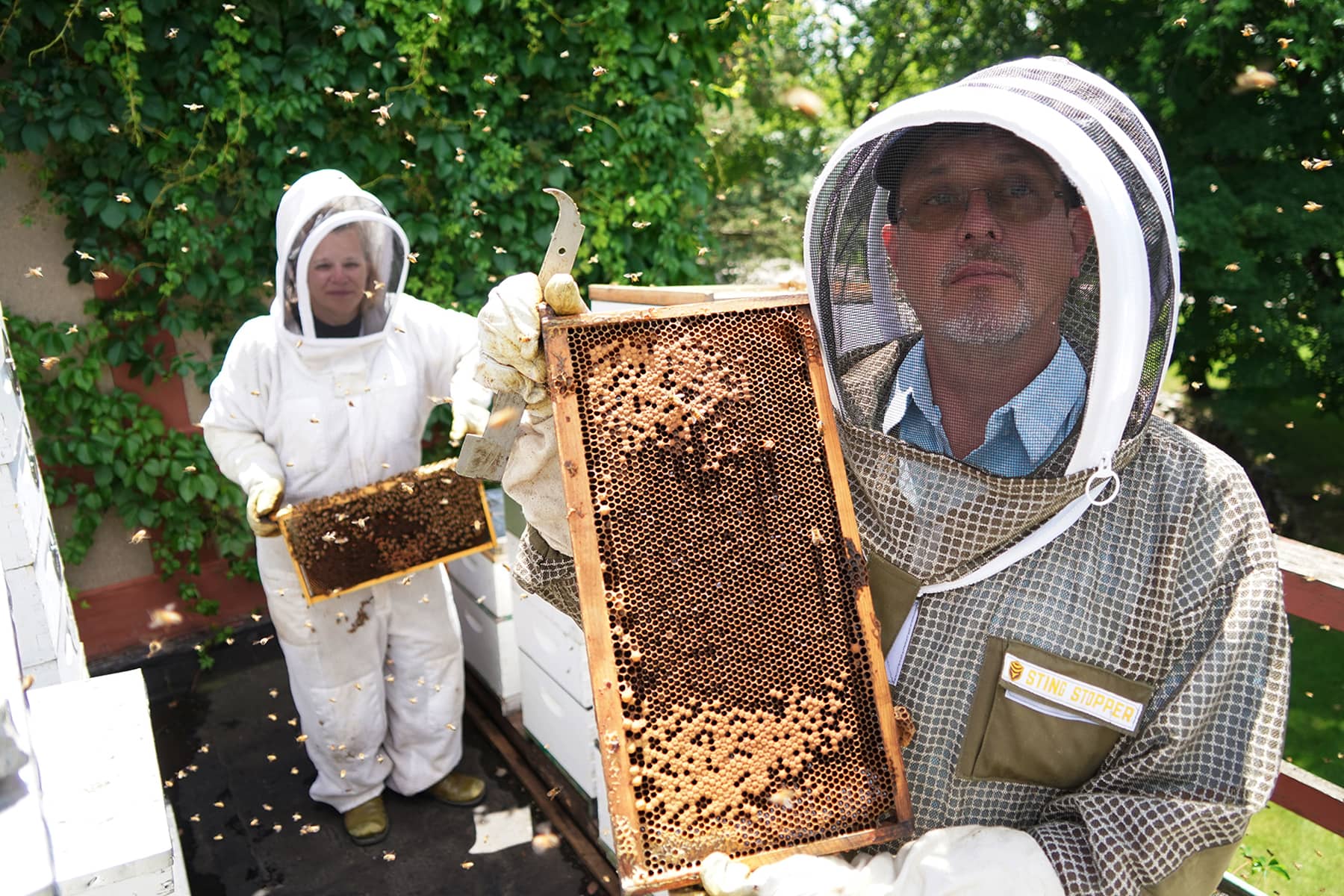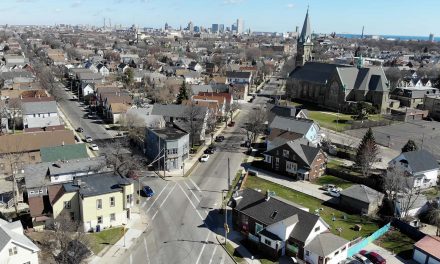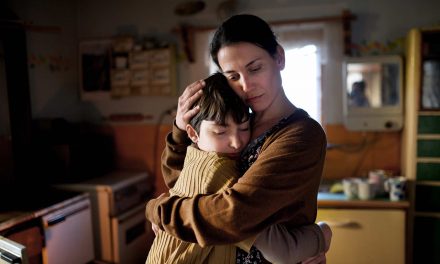
Among its many historical distinctions, Forest Home Cemetery has one of the oldest preserved forests within a metropolitan area that exists in Wisconsin. An unexpected byproduct of the silent city’s lush biodiversity is its ability to produce premium honey, with a little help from Chad Nelson and Barbie Brennan Nelson.
Because of its century-old root system and diverse flora, the unique setting in the heart of Milwaukee has allowed bees to produce honey with an unparalleled array of flavors.
“Forest Home Cemetery is a level two arboretum, with a wide variety of trees. Some of them are over 150 years old, and that lends a unique taste to the honey,” said Brennan Nelson, apiculturist and co-owner of Fairy Garden Hives. “In turn, the bees have an area to work where they are not being disturbed. In the green burial area, for example, the bees have a natural prairie to pollinate.”
After Milwaukee suffered a significant cholera outbreak in 1849, existing churchyard cemeteries ran out of space or were being built over for housing and other developments. Forest Home Cemetery was established by St. Paul’s Episcopal Church in 1850 to address the need for a permanent burial ground to serve the city’s growing population.
As part of the rural cemetery movement, which aimed to create landscaped burial grounds that also served as public green spaces, Forest Home was designed to offer a serene environment for both mourning and recreation. It functioned unofficially as Milwaukee’s first park, reflecting a broader 19th-century trend of creating multi-purpose green spaces in urban areas.
Eventually reaching 198.5 acres, the grounds are the final resting place for many of the city’s notable figures, including beer barons, inventors, writers, entrepreneurs, and politicians. The idea to introduce beekeeping to Forest Home Cemetery was inspired by the successful example of a cemetery in Brooklyn.
“Being on the Forest Home board, we were brainstorming new ways to bring awareness and people to the cemetery. I read an article in The New York Times about how Green-Wood Cemetery has hives and sells their honey as a fundraiser. So I thought, why don’t we do that?” said Brennan Nelson.
This led to the establishment of the Silent City Honey Farm at Forest Home. While Green-Wood would only sell their honey one day of the year, it is sold out on that day. Brennan Nelson said that even though their model is a little different, making honey has been a great fundraiser for Forest Home.
“It provides people with a personal connection to the cemetery, and allows them to take a bit of the cemetery home with them. It also has a nationwide impact, as we have shipped the honey all over the country,” said Brennan Nelson.
With more than 100 species of trees, the botanical diversity of seasonal blooms and the rich soil of the area are key ingredients to the unique flavors of the honey produced at Forest Home. All proceeds from the sale of Silent City Honey go directly to a preservation fund for the cemetery.
“During the honey season, we harvest by the month. Given what is in bloom at the time, the pollen lends to a distinctive flavor profile. It is regional and seasonal, similar to what most people know about making wine – but this is honey,” said Chad Nelson, apiculturist and co-founder of Fairy Garden Hives
Silent City Honey is divided by harvest over five months, from May to September. Nelson described his honey in the same way a sommelier would detail the characteristics of a fine wine.
May tastes like dandelions, daffodils, daisies, Siberian squill, lily of the valley, light and loamy, ephemeral plants. Everything blooms in June, so there are lilacs, fruit trees, and a floral overload in notes. July finishes with notes of mint, catalpa, and basswood.
August delivers the most traditional tasting honey, a classic, sweeter flavor with no floral notes to speak of, but maturity and depth due to the root structure of trees. And September brings notes of butterscotch, deep robust flavors, slightly darker in color based on darker tannins in the soil – with notes of buttered popcorn.
The label on bottles of Silent City Honey features artwork donated by Milwaukee historian John Gurda, from the Silent City book he wrote about Forest Home Cemetery. It used the iconic bronze sculpture created by artist Daniel Chester French in 1892.
The “Chapman Angel” was commissioned for the Chapman family memorial by Timothy Appleton Chapman, who founded T.A. Chapman’s department stores in Milwaukee. French would go on to create the Statue of Abraham Lincoln at the Lincoln Memorial in 1920.
The biggest misconception the public has about commercial honey is that it is real. Most honey is filtered, strained, pasteurized, altered, and then cut with beet juice, fructose sugars, and stabilizers to bring the price point down.
Nelson said Silent City Honey has allowed him to expand the mission of Fairy Garden Hives, which produces high-quality, locally sourced, artisanal honey while promoting environmental sustainability and supporting local ecosystems. The raw and unfiltered honey he produces is usually harvested within nine miles of its point of sale.
“Keeping bees in the city gives them access to a broader and more diverse diet than our modern monoculture agribusiness operations. Cities have more parks, preserves, median strips, and paths with flowers. More people with gardens, landscaped yards, and hanging baskets provide a better diet for bees than large-scale single-crop agriculture fields,” said Nelson. “Urban beekeeping makes for healthier bees and more flowers in the city.”
Bees have always played a crucial role in the broader ecosystem, and their presence in urban areas like Milwaukee has been vital. Nelson said the Earth as we know it comes from 150 million years of pollinating blooms with bees.
“Most all fruit, nuts, berries, and vegetables exist because of bees. Greater Milwaukee is home to more than 500 species of bees, but only one makes honey,” said Nelson. “Apis mellifera, commonly known as the honeybee, it is not even native to North America.”
The apiary at Forest Home Cemetery is not just about producing honey, it is also a community project aimed at education and engagement. Nelson conducts regular beekeeping tours and hosts workshops to teach the public about the importance of bees, the process of honey production, and urban beekeeping. The efforts help to foster a sense of community and environmental stewardship.
“At each market, we explain our beekeeping practices of using clean equipment, not using brood honey, why we harvest frequently and do not use chemicals,” said Nelson. “We tell people about Forest Home and the green initiatives that the cemetery is utilizing,”
Nelson said the funeral industry is a heavy polluter, so Forest Home was helping to offset that. The cemetery provides a huge ecological boost to its neighborhood, and on a thermal map of Milwaukee, is the coolest place in the area. The grounds are a green oasis in a park-like setting, in the middle of the city.
But establishing an apiary at a cemetery was not without its challenges. One of the primary concerns was ensuring the bees and cemetery visitors could coexist peacefully. Nelson addressed the issue by placing the hives on the second floor of the maintenance building.
“We are keeping them out of harm’s way, where no one can access the hives. Honeybees will not attack humans unless they feel threatened,” said Nelson.
Despite the challenges, the apiary at Forest Home Cemetery has thrived. It represents a beautiful blend of history, nature, and innovation, showing how historical sites can be repurposed to benefit the environment and the community.
The Nelsons have each reflected on their sweet legacy, which started about a decade ago when they moved to River Hills. The couple was faced with what to do with their five acres of land.
“We thought that we should either try keeping bees or chickens. Since there are coyotes in the area, we felt that chickens were a bad idea, so bees it was,” Brennan Nelson recalled.
The decision marked the beginning of a fruitful journey. Initially, the Nelsons were told that bees do not produce honey in their first year. However, their bees defied expectations, producing an impressive 30 gallons of honey.
“We started giving honey to friends and family and had so much leftover that we sold quite a bit,” Nelson explained. “After successfully overwintering several hives, we expanded the next year and Fairy Garden Hives was born.”
Fairy Garden Hives has since grown from a backyard project into a beloved local enterprise, demonstrating the Nelsons’ dedication to their bees and the community. Their story is an example of the unexpected joys and successes that can come from embracing nature’s tiny yet mighty pollinators.





















































































































































